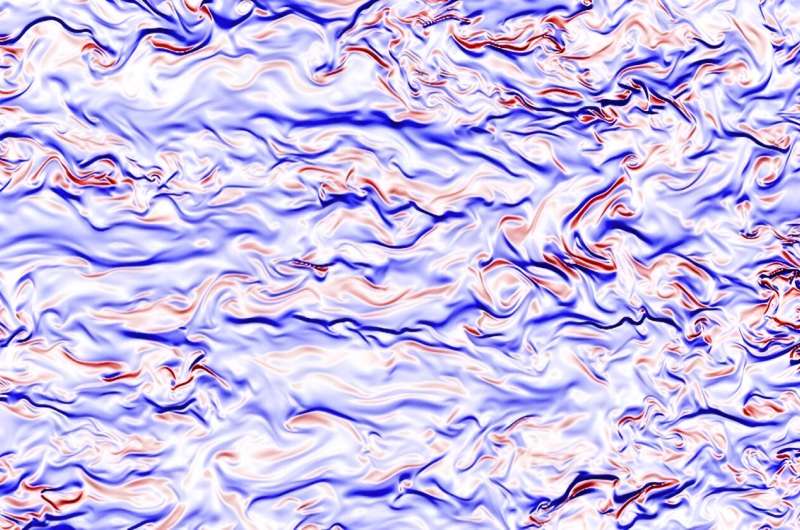This article has been reviewed according to Science X's editorial process and policies. Editors have highlighted the following attributes while ensuring the content's credibility:
fact-checked
trusted source
proofread
Supercomputers shine new light on ocean turbulence

As an ocean wave laps up against a beach, it contains innumerable swirls and eddies. The seawater forms complex patterns at each level, from the waves that surfers catch to ripples too small and fast for the human eye to notice. Each motion sets off another set of motions, cascading through layers of water.
What's merely scenic at a beach is essential for scientists to understand. Describing more accurately how heat moves through the ocean could help scientists develop better, more precise computer models of Earth's climate. Understanding turbulence—the irregular movement of fluids—in the ocean would help researchers solve this issue.
Scientists at the University of Cambridge and the University of Massachusetts Amherst used the Summit supercomputer at the Department of Energy's Oak Ridge Leadership Computing Facility (OLCF) to run a new model of ocean turbulence. (The OLCF is a DOE Office of Science user facility.) The work is published in the Journal of Turbulence.
The computer simulated a generic 10-meter cube of ocean water. While this doesn't seem very big, just this small chunk of ocean is incredibly complex. To analyze changes down to the centimeter, the program simulates the cube of water on a digital grid. This digital cube was made up of almost 4 trillion grid points.
With the model, the scientists analyzed how turbulence influences heat moving through seawater. In the real ocean, the sun heats water on the surface. Cold water sits at the bottom of the ocean floor. The heat disperses through the different layers of water, but it's not a series of consistent or small changes. The water is a combination of relatively still areas and areas that mix vigorously once in a while. Turbulence's inconsistency is one of the things that makes it so complicated.
This new model was the most detailed simulation of these processes yet. Previously, computers simply weren't powerful enough to handle the layers upon layers of complexity and capture the motion at the vast range of scales.
To handle those limitations, past models collapsed all of the actions happening in different parts of the water into one average measurement. In addition, they used a low value of a ratio that's important to measuring the turbulence and dissipation of heat in realistic ocean flows. But that muddled the individual changes and their effects.
In contrast, the new model used a much higher value of the ratio and showed how the turbulence occurs under realistic conditions. It enabled the scientists to track the initial surge of turbulence and then follow it until it faded away. The new model also allowed them to zoom into different layers to examine specific details.
The data from these new simulations is challenging some long-standing theories about turbulence. Previously, scientists thought that cold and hot fluids mix into each other at about the same rate. The model suggests that the hotter fluids mix slower than the momentum from the turbulence.
In addition to improving climate models, this information can provide insight into other areas influenced by fluid dynamics. It may help scientists better understand how pollution spreads through water or air. That's important to scientists who are working to help communities and ecosystems affected by pollution.
With the even-more-powerful Frontier supercomputer now available at OLCF, the scientists on this project are hoping to further expand their understanding of this complex topic. The waves in the ocean are beautiful, but so are the data that help us comprehend them.
More information: James J. Riley et al, The effect of Prandtl number on decaying stratified turbulence, Journal of Turbulence (2023). DOI: 10.1080/14685248.2023.2178654
Provided by US Department of Energy





















